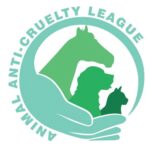Animal cruelty is a distressing reality that transcends borders, affecting countless creatures across the globe. In the United Kingdom, the definition, laws, and welfare standards that govern the treatment of animals are crucial components of civil society. Yet, as we navigate this complex issue, a rather playful question arises: what exactly constitutes animal cruelty in the UK, and how can we reconcile the differences in perception regarding animal welfare?
To comprehend the multifaceted concept of animal cruelty, one must first unravel its layers. At its core, animal cruelty can be viewed as the infliction of unnecessary suffering or harm upon animals. This encompasses a wide spectrum of behaviors, ranging from neglect and abandonment to deliberate acts of violence. However, the legal parameters surrounding animal cruelty in the UK are delineated through specific legislative frameworks designed to protect our furry, feathered, and finned friends.
Central to the discussion of animal welfare in the UK is the Animal Welfare Act 2006. This groundbreaking legislation was a significant advancement in animal protection, consolidating various previous laws and introducing a duty of care for pet owners. Under this act, an animal is defined as a “vertebrate,” and it is illegal to cause unnecessary suffering to an animal. Moreover, the act places an obligation on owners to ensure that the welfare needs of their animals are met. These needs include adequate food and water, a suitable living environment, and the ability to exhibit normal behavior.
Yet, while the Animal Welfare Act provides a robust framework for addressing cruelty, there are still challenges in enforcement and public awareness. Many individuals may not recognize what constitutes neglect versus cruelty, often complicating the reporting process when witnessing what they believe to be abusive behavior. For instance, consider a scenario where a neighbor keeps their dog tethered outside in inclement weather. This may appear as neglect, but does it rise to the level of cruelty? Engaging with this grey area prompts discourse on the interpretation of welfare standards and the moral obligations of pet ownership.
The repercussions of animal cruelty extend beyond individual cases, resonating throughout communities and society as a whole. Studies have consistently shown a correlation between animal cruelty and broader societal issues, including violence against humans. This intersection raises pivotal questions about what motivates individuals to commit acts of cruelty and how societal norms shape our perspectives on animal welfare.
In addition to the Animal Welfare Act, the UK has established various regional and national organizations dedicated to animal rights advocacy. The Royal Society for the Prevention of Cruelty to Animals (RSPCA) plays a pioneering role in investigating reports of cruelty, conducting welfare assessments, and promoting public education on responsible pet ownership. They are often the first line of defense against animal cruelty and play a vital role in enforcing the legislation designed to protect animal welfare.
Despite the provisions laid out in the Animal Welfare Act and the regulations enforced by organizations like the RSPCA, the challenge of ensuring compliance remains. There have been calls for harsher penalties for those found guilty of cruelty, as current sentencing options often do not reflect the severity of the offenses. Critics argue that without sufficient deterrents, the cycle of abuse may perpetuate, leaving countless animals vulnerable to neglect and harm.
Moreover, the issue of industrial farming raises significant concerns regarding systemic animal cruelty. The welfare of livestock is governed by various welfare standards, often lagging behind public expectation. Practices like intensive farming and factory methods have been criticized for prioritizing profit over the humane treatment of animals. Consequently, consumers are left to ponder the provenance of their food and the ethical implications of their choices.
So, how do we challenge the status quo? The responsibility falls not only on lawmakers and organizations but also on individuals. Raising awareness about animal welfare issues, advocating for higher standards in livestock farming, and reporting suspected cruelty are essential actions that can make a tangible difference. Engaging with local animal rights groups, participating in community outreach events, or even simple acts like adopting rather than shopping for pets contribute to a larger movement advocating for humane treatment.
Additionally, ensuring that children are educated about animal welfare from an early age lays the groundwork for a compassionate society. Instilling values of respect and empathy for all living beings can foster generations that view animal cruelty as anathema. Initiatives in schools and community centers can play an integral role in shaping attitudes and behaviors regarding the treatment of animals.
In conclusion, the question of what constitutes animal cruelty in the UK is both complex and nuanced. The legal frameworks that exist provide a foundation for the protection of animals, but ongoing challenges in enforcement and cultural perceptions persist. Each individual has a role to play in combating cruelty and advocating for higher welfare standards. Through education, awareness, and community action, the fight against animal cruelty can gain momentum, paving the way for a future where all creatures are treated with the dignity and respect they inherently deserve.








